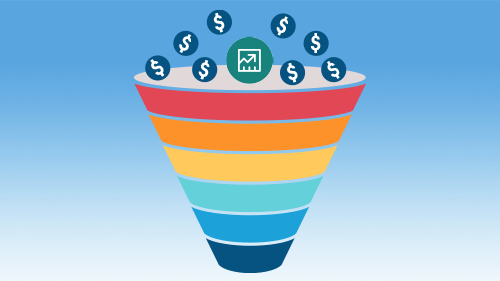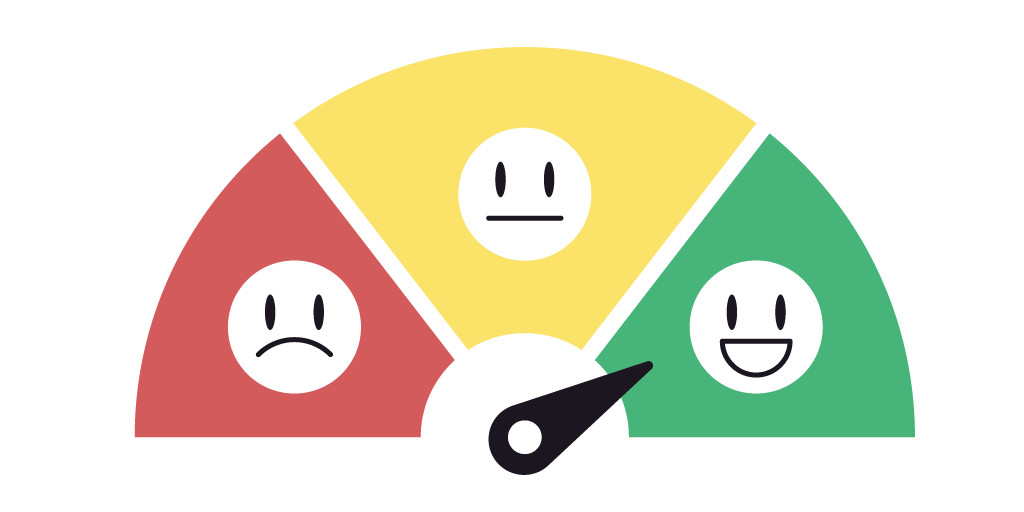
Businesses that use a customer-centric approach are 60% more profitable than businesses that don’t. Centering your business operations around your client is an effective way to stay relevant in these rapidly changing times.
It enables you to stay focused and agile and develop a core of your business that guides it forward. And it has a direct positive impact on your sales.
With so many businesses publicly embracing this strategy, it has emerged as an enticing option for businesses struggling to find their footing. Let’s take a look at some of the key benefits of using a customer-centric strategy for your business.
5 benefits of using a customer-centric strategy for your business
As technologies and business trends evolve, the one aspect that remains a constant in any type of industry is the customer. A customer-centric business approach aims to provide value to customers with its products and services.
It does so by responding to the needs and wants of the customers and resolving them by provisioning tailored experiences. The goal is to understand/study the needs of the customer and provide them with suitable solutions.
It has proved to be an effective strategy as customers appreciate the attention and focus they receive — the consideration for their preferences and enhanced service. They are more willing to engage with a business that provides them with a personalized experience.
We take a look at some of the most prominent benefits of going customer-centric and how you can make the most of it:
1. Improved sales

Putting your customer first and foremost arms you with the means to achieve improved sales. You can study their needs better and examine their life cycle to understand what they need at the moment. It helps you prepare an efficient sales funnel builder.
It in turn helps you identify your customers’ current needs and present them with appropriate solutions. They are more likely to engage with your offers when they align with their current needs more appropriately.
For example, if a customer is in the early stages of the sales funnel with you, examining their life cycle will help you curate your interactions based on getting to know them. Let the customer see how you can help them instead of hard-selling a product they may or may not need.
You’ll be able to segment your audience based on this research and engage with them better. When your customers receive tailored services from you, they are more likely to stay loyal to your brand and even recommend you to their friends and family.
a.) Case in point: Nike
Nike is a footwear brand that is one of the world’s leading suppliers of athletic shoes and a major manufacturer of sports equipment. The company has been openly customer-centric, claiming to start everything they do with the customer.
Their personalized approach yielded them a whopping 10% increase in retail sales in 2019, which CEO Andy Campion directly credited to an “increasingly more direct connection to consumers in the marketplace.”
Nike had been working to merge the online and offline shopping experience for their customers, making it seamless and personalized. The goal was to reduce friction and establish a direct connection with the client.
The official app, for instance, has tailored offers for customers based on past engagement. Moreover, customers can save a product online and get it at their nearest store to check for fit before making the decision to buy.
2. Improve retention rate

The importance of retaining a customer after the hard work that goes into acquiring them is undeniable. Once the sale is done, you need to make the customer stay with you or come back for more. Being customer-centric allows you to do it with ease.
Firstly, the approach calls for you to engage with your customer right after the purchase. This can be in the form of emails that tell the customer how to get the most out of the product. For example, washing instructions for a shirt they just bought.
Secondly, you can offer complementary or additional products to aid the experience of your customer by upselling. For instance, matching trousers for the shirt the customer had just bought. They’re more likely to consider it if they had a positive experience with you.
Retaining customers helps you reduce costs that go into acquiring new customers while building good word of mouth/goodwill around your brand. Since you study their life cycle with you, you are better equipped to suggest to them products that they’ll be more likely to buy.
a.) Case in point: Amazon
Amazon is an American technology company that has revolutionized the eCommerce industry with online shopping and related services. Its entire model is based on customer-centricity, where the platform stores customers’ search history to recommend the products.
It simplifies the experience for the customer where they don’t have to search for anything from scratch. Amazon provides them with the best options based on previous searches as well as buying histories. Moreover, if you buy a product often, it saves that transaction as well.
It may recommend it again after some time to remind you of it. Or show the product above others with a stamp indicating when you last purchased it and how many times you’ve purchased it. It keeps the customer in the loop with their preferred products.
This extremely tailored shopping experience has resulted in Amazon’s retention rates being over a staggering 90% every year. This is a huge accomplishment that is directly fueled by the company’s customer-centric approach.
3. Reduce costs
It may seem counterintuitive to say that focusing your efforts on researching customers will help you reduce costs when it’s obviously an added expense over your day-to-day business operations. That is not the case.
Yes, it will require additional effort to research your customer and restructure your entire strategy to make it revolve around your customer’s needs. But it will help you save and rescue costs in the long run by increasing sales and retention.
Having a focused marketing strategy on something that is repeatedly proven to be beneficial will only help you increase your profits. You’ll be operating based on facts and data. A data-driven approach helps you cut costs by streamlining your efforts.
For example, instead of targeting your social media marketing to everyone in a certain age group, you can target specific people in every age group that has historically engaged with your business. It’s a more focused strategy that costs less by being selective.
4. Provide a positive experience to the customer

Providing a positive customer experience is key to gaining their trust and loyalty. However, many companies struggle with understanding what that entails. This is where customer-centricity comes in.
It helps you understand the needs, preferences, and expectations of a customer to provide them with an ideal experience with you. For example, a customer might stay at a hotel where they ask all their meals to be sugar-free.
The hotel might keep this information sorted to serve the customer sugar-free meals without being reminded when they visit again. They may even suggest sugar-free eating options on their own to the customer.
Such attention to detail is what elevates the customer experience. They’ll see that the brand cares about their experience with them and it putting in the effort to make it the best. It directly impacts the loyalty they feel toward you.
5. Operational efficiency
Having a customer-first approach paves way for increased operational efficiency as every operation is focused and motivated in one direction. Your team knows the end goal and will be working toward it no matter which path it takes.
The Vice-President of External Payments at Amazon, Patrick Gauthier, pinpoints the role of customer-centricity in increasing efficiency by saying that companies need to look at the people transacting instead of the payments coming with them.
The goal is to understand the people you are serving and devise the right approach will be with them. When that picture becomes clear to you, your approach will automatically be more targeted and focussed.
This is what brings efficiency to customer-focused operations as the end goal and the path to it. Furthermore, it’s backed by data and statistics to help you chart the most optimal path and stick with it until you find success.
The result: a happy and satisfied customer who appreciates your effort and rewards you with loyalty.
Understand your customers’ needs to serve them better and gain their loyalty with customer-centricity
Customers are the backbone of any business. And serving customers is the only way a business can succeed. A customer-centric approach puts the focus on the most important aspect of any business and builds every strategy from that core.
It arms you with the means to understand your customer’s needs and wants better and provide them with tailored experiences that win you their trust. Customers are more likely to engage with you and recommend it to their friends and family.
Let us know in the comments how you think businesses can embrace the customer-centric model for maximum success.





